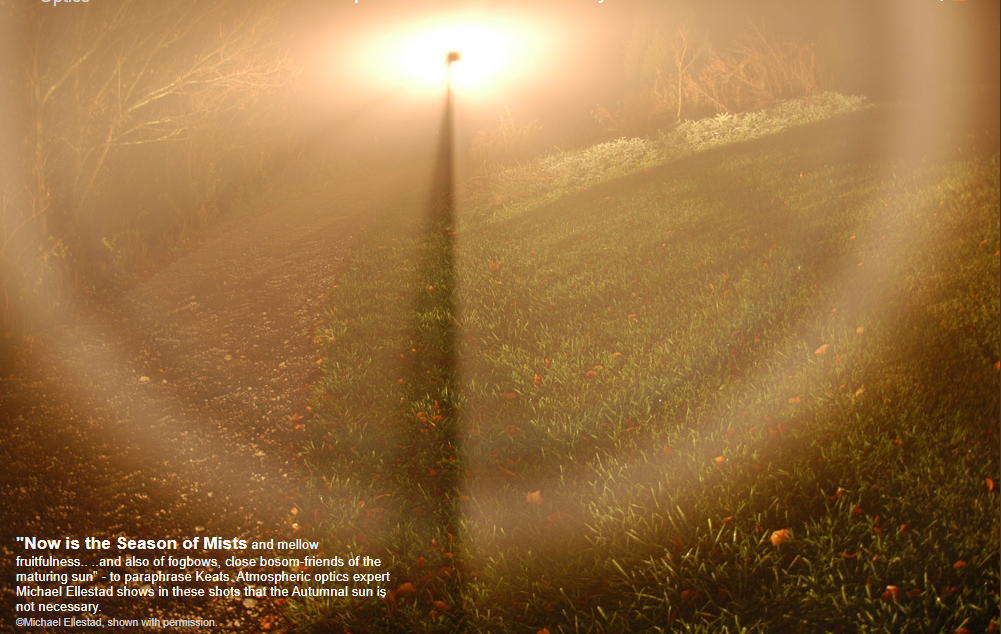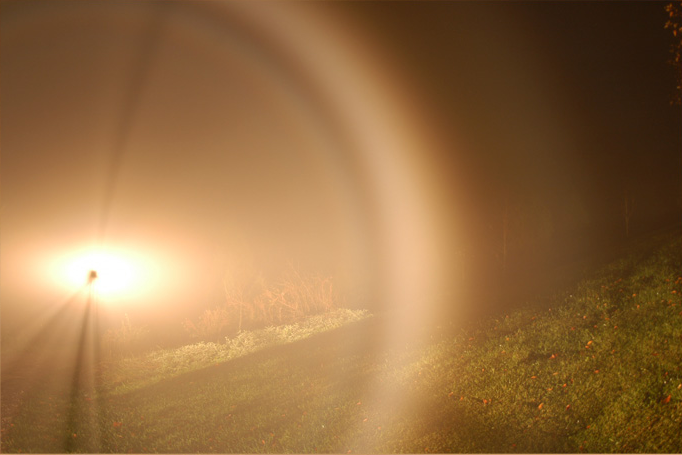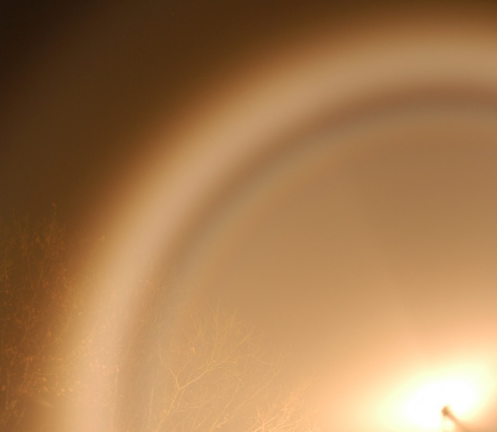OPOD - Season of mists and fogbows
OPOD - Season of Mists and Fogbows: A Fascinating Phenomenon
As the autumn season sets in, nature paints a beautiful picture with misty mornings and mellow fruitfulness. But did you know that this season also brings forth a captivating atmospheric optics phenomenon known as fogbows? These ethereal arcs of light, often referred to as "close bosom-friends of the maturing sun," add a touch of enchantment to misty landscapes. In this article, we will delve into the intricacies of fogbows and explore the science behind their formation.
Fogbows, like their more colorful counterparts, rainbows, are formed due to the interaction of sunlight with water droplets in the air. However, unlike rainbows, which occur when sunlight refracts and reflects within raindrops, fogbows arise from the scattering of light by tiny water droplets suspended in fog or mist. This scattering causes the light to spread out and form a faint, whitish arc in the sky.
To witness a fogbow, atmospheric optics expert Michael Ellestad suggests a simple yet effective technique. By using a car headlamp on a misty night, one can create their own fogbow. By blocking the light from the second headlamp and looking or pointing the camera along the remaining single beam away from the headlamp, the fogbow becomes visible. It is important to note that this should not be attempted on or near public roads for safety reasons.
A typical fogbow consists of a primary arc, which is usually bright and white in color. Inside this primary arc, there is a dark space followed by another arc called the supernumerary. While fogbow primaries exhibit faint colors or none at all, supernumeraries display stronger hues. These additional arcs result from interference patterns caused by light waves diffracting around the droplets. The presence of supernumeraries adds an extra layer of beauty and complexity to fogbows.
The visibility and intensity of fogbows depend on several factors, including the size and distribution of water droplets in the fog or mist. Freshly formed fog or mist is ideal for revealing the supernumeraries because the droplets have similar sizes, allowing for more pronounced interference patterns. As fog ages, the droplet size distribution broadens due to collisions and further condensation, making the supernumeraries less discernible.
It's important to note that fogbows are not limited to autumn; they can occur in any season when the atmospheric conditions are favorable. However, the misty mornings and cooling temperatures of autumn often provide the perfect backdrop for these mesmerizing displays of light.
In conclusion, fogbows are a captivating atmospheric optics phenomenon that adds a touch of magic to misty landscapes. With their faint, whitish arcs and occasional vibrant supernumeraries, fogbows create a sense of wonder and awe. By understanding the science behind their formation and the optimal conditions for their visibility, we can appreciate these ethereal spectacles even more. So, the next time you find yourself in the midst of a misty morning, keep an eye out for these elusive yet enchanting fogbows dancing in the sky.

"Now is the Season of Mists and mellow fruitfulness.. ..and also of fogbows, close bosom-friends of the maturing sun" - to paraphrase Keats. Atmospheric optics expert Michael Ellestad shows in these shots that the Autumnal sun is not necessary.
©Michael Ellestad, shown with permission.
Michael generated the fogbow on a misty night using a car headlamp. Block the light from the second headlamp and look or point the camera along the remaining single beam in the direction away from the headlamp. Do not do this on or near a public road.
At right a secondary fogbow is visible outside the bright primary.
inside the primary there is a dark space and then a supernumerary. Fogbow primaries show only faint colour or none at all but the supernumeraries have stronger hues.
Freshly formed fog or mist is the best to reveal the supernumeraries for they require the fog droplets to have similar sizes. As a fog ages its droplet size distribution broadens by collisions and further condensation.


Note: this article has been automatically converted from the old site and may not appear as intended. You can find the original article here.
Reference Atmospheric Optics
If you use any of the definitions, information, or data presented on Atmospheric Optics, please copy the link or reference below to properly credit us as the reference source. Thank you!
-
<a href="https://atoptics.co.uk/blog/opod-season-of-mists-and-fogbows/">OPOD - Season of mists and fogbows</a>
-
"OPOD - Season of mists and fogbows". Atmospheric Optics. Accessed on November 26, 2024. https://atoptics.co.uk/blog/opod-season-of-mists-and-fogbows/.
-
"OPOD - Season of mists and fogbows". Atmospheric Optics, https://atoptics.co.uk/blog/opod-season-of-mists-and-fogbows/. Accessed 26 November, 2024
-
OPOD - Season of mists and fogbows. Atmospheric Optics. Retrieved from https://atoptics.co.uk/blog/opod-season-of-mists-and-fogbows/.